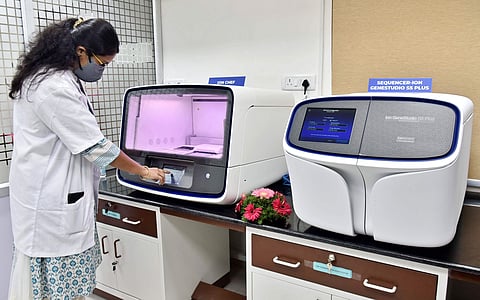

Centrally funded institution systems contributed 67.54 per cent of India's total national research output during 2001-2020, according to a study conducted by Banaras Hindu University's (BHU) department of computer science. The findings have been published in the journal Current Science, as per a PTI report.
The results
The study, which analysed the contribution of major centrally funded institution systems to India's total scientific research output, reports the Indian Institute of Technology (IIT) system was the largest contributor in terms of research papers, with 152,276 publications during 2001-2020. The IITs were followed by the Council of Scientific and Industrial Research (CSIR) with 99,430 papers, central universities with 97,524 papers, the Department of Atomic Energy (DAE) with 77,819 papers, National Institutes of Technology (NITs) with 46,034 papers and the Indian Council of Agricultural Research (ICAR) with 44,733 papers.
"The contribution of major centrally funded institution systems to India's total research output over the previous two decades increased from 62.46 per cent in 2001-2006 to 72.7 per cent in 2016-2020. The top six, including the IITs, CSIR, central universities, DAE, NITs and the ICAR contributed over 50 per cent of the total national output. The individual research output of the group of institutions also increased over the period under review," the study says.
"IITs, NITs, Indian Institutes of Science Education and Research (IISERs) and Indian Institute of Management (IIMs) showed rapid growth in research output with a two-fold increase in the number of publications between 2011-2015 and 2016-2020. The research observed that the proportionate share of IITs in the overall national output increased from 12.56 per cent in 2001-2005 to 18.72 per cent in 2016-2020. On the other hand, the proportionate contribution of the CSIR system fell to 9.14 per cent in 2016-2020 from 12.43 per cent in 2001-2005," it adds.
How was the study conducted?
The PTI report explains that the centrally funded institutional systems in India comprise a diverse set of systems. The study grouped them into three categories: Ministries, Departments and Autonomous organisations under them; Higher Education Institutes funded by the Centre; and councils and agencies maintaining different institutions.
The scientists computed the standard indicators of total research output, and their proportionate share in the overall national output and compounded annual growth rate (CAGR) for all the institution groups. "The various results were computed for the 16 major identified institution systems, the proportionate contribution of each institution system to India's total research output identified and the data divided into four different blocks of five years each," the study said.
What are the systems?
The Indian Research and Development (R&D) system consists of various organisations such as universities, government research laboratories, autonomous institutions, private research laboratories and centres. There were 1,043 universities and about 40,000 affiliated colleges in India as of June 2021, according to the University Grants Commission (UGC). However, currently, this system consists of 54 central, 429 state, 125 deemed and 380 private universities and more than 150 institutes of national importance.
This system caters to activities related to various disciplines such as arts, languages, sciences, social sciences and humanities and receives financial support from different sources. In addition, there are other well-established institutional systems with significant contributions to the national R&D output.
These include the laboratories/centres under the Council for Scientific and Industrial Research (CSIR), Defence Research and Development Organisation (DRDO), ICAR and DAE. There are various sources of R&D funding as well as various models followed by these organisations. The major portion of R&D funding, however, is provided by the central and state governments. Their contributions account for 51.8 per cent of the total annual gross expenditure of the country's R&D while the private sector accounts for about 37 per cent, as per PTI.
More about the study
The study claimed to have limitations such as it only considered research papers and ignored other R&D outputs such as patents, and technologies developed, among others. "A more detailed analysis of the research contribution of the institutions would, therefore, need data about patents and technologies developed," it said.
The study also did not ascertain the proportionate contribution of the centrally funded and privately funded institutions and institution systems in the total research output. "In light of this information, in India, the role of stakeholders such as the government and funding agencies is important in ensuring higher productivity from centrally funded institutions as well as increasing the contribution of state- and private-funded institutions in research," the study concluded.
